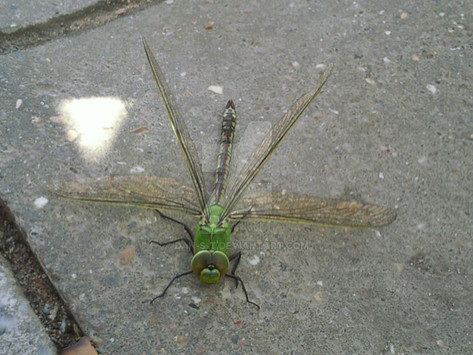HOME | DD
 TheTimeDuck — The double-tailed bird
TheTimeDuck — The double-tailed bird

#birds #colouredpencils #dinosaurs #dragon #extinctanimals #mesozoic #timetravel #wildlifeart #nauralhistoryillustration #animals #china #chinese #colours #evolution #extinction #handdrawing #jurassicpark #naturalhistory #paleoart #paleontology #theropoda #wyvern #birb #jurassicworld #dinosaurart
Published: 2021-01-13 20:57:58 +0000 UTC; Views: 11620; Favourites: 228; Downloads: 11
Redirect to original
Description
Although the famous Archaeopteryx has been long thought to be the only "missing link" between non-avian and avian dinosaurs, it is well known nowadays that the evolution of the flying critters we call birds isn't that straight and simple, including several "experiments" and dead branches, and that even Archaeopteryx could not have been directly ancestral to any of modern day chickens, eagles, and blackbirds.
Anyway, thanks to the many reconstructions seen in documentaries and on books and magazines, the general public is well aware of the differences between those early, clumsy flutterers and the proficient fliers we see around today.
That is, the former usually had clawed grasping hands, toothed jaws and, above all, long bony tails composed of many vertebrae, with feathers sporting laterally from each vertebra, or just a fan of feathers at the tail tips. Very different from the tails of modern birds, whose bony part is highly reduced, with feathers apparently irradiating directly from the lower part of the animal's back.
All said above is obviously a brutal generalization, since we know a lot of intermediate forms existed, and many different types of short-tailed, bird-like creatures were already around during the Cretaceous...
One of the most interesting of all is Jeholornis, or the double-tailed bird. Indeed this animal, despite its overall built highly similar to that of other feathered theropods, shows a peculiar arrangement of a long non-avian tail bearing two distinct fans of feathers, one being at the distal end of the tail, as usual, and the other being close to the proximal end, just behind the rump, as in most modern day birds.
We don't know what the animal could use this double tail for, though has been speculated that since the distal fan was composed of thin, not completely overlapping feathers, the animal could have been using that structure for display, relying on the other fan at the base of the tail for controlling the flight direction.
Jeholornis, with an overall lenght of up to 75 cm, was a relatively large avialan; its fossils have been uncovered in the Jiufotang Formation in Hebei Province, and in the Yixian Formation in Liaoning Province, both located in China.
Three different species are known (Jeholornis prima, J. palmapenis and J. curvipes), all dating back to Early Cretaceous, between 125 and 120 million years ago.
The relative abundance of fossils of this genus allows us not only to restore the animal's life appearance but also to know more about its growth (apparently slow, more similarly to non-avians than to true birds) and its diet, seemingly based on seeds which have been found fossilized inside the body of some specimens.
The species portrayed in the picture is Jeholornis prima.
MAIN REFERENCES:
Scott Hartman - Skeletal reconstruction of Jeholornis prima - 2013;
Jingmai O'Connor et al. - Unique caudal plumage of Jeholornis and complex tail evolution in early birds - Proceedings of the National Academy of Science of the United States of America - 2013.
Related content
Comments: 12

👍: 1 ⏩: 1

👍: 0 ⏩: 1

👍: 0 ⏩: 0

👍: 1 ⏩: 0

👍: 1 ⏩: 1

👍: 0 ⏩: 0

👍: 1 ⏩: 1

👍: 1 ⏩: 1

👍: 0 ⏩: 0

👍: 1 ⏩: 1

👍: 0 ⏩: 1

👍: 0 ⏩: 0

























